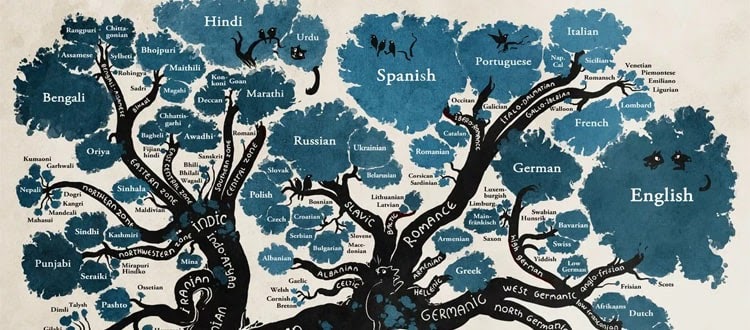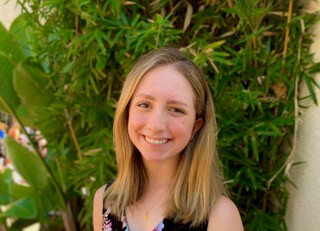The secret to learning a language
Reagan Smith. 12/25/2020

There’s no doubt that in today’s fast paced, multicultural, connected world, it’s beneficial to know more than one language. Over half the world– estimated to be between 60 and 75%– speak at least two languages, according to Gaia Vince from BBC’s Future. In fact, our brains have evolved to understand multiple languages, to look for clues and to decipher foreign words we have seldom encountered. Language is a complex combination of sounds and symbols that all come together to represent a group of people connected by culture, and, if one follows the signs, they can unlock a world of understanding.
Latin is a unique language to learn because it is no longer spoken, only written and read. We can trace thousands of our words back to their Latin roots and witness the long-lasting presence of the Romans in our governmental structure, art and literature.
This brings me to today, where I sat down with Latin teacher Dr. Jeffrey Feland, a faculty member of Sage Hill School in Newport, CA. He works with students in Latin classes one through four, runs the Junior Classical League, a club that participates in annual challenges and competitions and is a favorite amongst the students. A common theme that emerged from our interview was how important patterns are to a language, and he explained how seeing them helped him excel in his learning.
Reagan Smith: So starting off, how many languages do you know, and what are they?
Jeffrey Feland: Well, I would say I know Latin and Ancient Greek, but I’ve never had to speak to others in them. Then, I can understand, read and speak Spanish and know basic conversational Italian, French and German. I feel fairly fluent in modern Greek– but then of course that brings up the question of how to define “fluency.”
RS: Of course. So in total, that’s eight languages, including English, obviously. Wow, that’s a lot. How did you begin learning your first foreign language, and what pushed you to become fluent?
JF: At the end of your 7th-grade year, your teacher can recommend you to take high-school classes during the summer before 8th grade, and there was the option for Algebra 1 and Spanish 1. Now I only got the recommendation to do Algebra 1, and I went to my language arts teacher in 7th grade, being the precocious 12 year old I was, and asked why I didn’t get a recommendation to do Spanish 1, even though I had A’s in her class. She told me to my face that she didn’t feel that my English skills were strong enough and that I would never be good at a foreign language, in her opinion.
RS: That’s shocking, considering you now know eight languages.
JF: Yes, I was stunned, and I didn’t know how to respond, so I just assumed that she was right, coming from a place of authority. Eventually, during freshman year I was in my Spanish 1 class. I remember feeling pretty disoriented the first month in that class, but then one day I looked at everything on the page and thought, “This is just patterns. I can just repeat patterns and rules again and again.” Spanish is a pretty straightforward language, so if you learn the rules for it and how the sounds change, you can predict words you’ve never heard before. I started teaching myself all fourteen verb tenses, and on the back of my tests, I would take a random verb and conjugate it into a chart that would take up the whole piece of paper. My teacher finally asked me, “who taught you this; why are you in Spanish 1– this is, like, everything.” I said to her, “I just figured it was patterns.” They moved me up to Spanish 2, where I had the highest grade in the class, and I decided I had one thing left to do freshman year, which was to revisit my 7th grade language teacher. I told her, “Remember how you told me Spanish 1 would be really hard for me and I would struggle? Well, that first month was pretty hard, but then something clicked, they moved me up to Spanish 2, and I’m acing every test. I wanted to tell you to never tell another student they would be bad at a foreign language because that is not how to encourage a student.” Everybody can do a foreign language, you just have to have the right teacher.
RS: Where did you go from there, a freshman in Spanish 2?
JF: I did Spanish 3 and 4 sophomore year, and because my school didn’t offer AP Spanish, I taught it to myself in the library with a tape recorder and got a four on the AP test. I then taught myself French, since it’s related to Spanish and there’s some overlap, and senior year I was helping French 4 students with their homework because they just couldn’t see the patterns. Still, somehow I graduated as a math-science person and planned on majoring in biochemical engineering at UC Davis.
RS: So how did you get into the linguistic route in life?
JF: I took a class in Latin and Greek roots in medical vocabulary, to help me become a doctor. I loved the course and the teacher, I could recognize the roots, and I saw how the words changed. Then, I decided to switch to a classics major and double in English, with a focus on creative writing.
RS: Have you come up with some patterns that help you organize the various Romance languages you’ve learned over the years?
JF: So, I enjoy following the etymology of words and seeing how they change from Latin to French to English, because of course, French was the official language of England when they conquered the land. The hard c in Latin turns into a soft c in French and then turns into a “ch” in English. One of my favorites is the words “carus” and “ergos” in Latin, which mean “hand” and “work” respectively. They come together to mean “work of the hand.” French takes this and has the word “chirurgie,” and this translates to “surgery” in English. It blew my mind that you could still see it in a way if you took the patterns and identified them. There’s sound, places where things have softened or simplified, and, of course, dealing with word families, where you can take a root word and learn all related words and paths to learn a huge section of words.
RS: Do you have any guidelines or a general process for learning a language? What has been the most helpful?
JF: I always say to learn the verbs first, because those are the words of action. You can identify the patterns, see when the action is happening, see who’s doing the action. That’s essential, especially with Romance languages. Once you’ve mastered the verbs, it’s really a matter of some grammatical constructions, the subjunctive mood and vocabulary. Verbs are just so central to a language because if you can understand the action of the sentence, you can understand what other words are coming into play and can add on and play with it.
RS: As a teacher, you teach new students Latin every year. What is the difference between learning a language and teaching a language?
JF: When you start teaching to someone else, you really learn it. The two [learning and teaching] are aligned. When you learn a language, you sometimes become your own teacher; you learn what your strengths and challenges are.
As a teacher, I try to demystify the language and be as straightforward and honest, now that I’m on the far end of the spectrum of knowing the language. It’s a language: it’s complicated and there are lots of moving pieces. This is where my scientific brain comes into play, where I try to make it “x plus y equals z” and find rules and patterns to follow.
RS: What do you think has been the most helpful language to know?
JF: Latin- it gives us two-thirds of our English vocabulary, and about 90% of our technical vocabulary (science, math, medicine, legal system and government). It is so foundational and so important to English, so knowing those greatly opens up your English ability. English is a weird and important juncture of languages– heavily influenced by French and taking vocabulary from the Latin family– which is what makes it so difficult but also what gives it huge flexibility and creativity.
Cover Photo: (Cultures Connection)

Reagan is a junior from Sage Hill School. She is passionate about all things related to science, especially biology and medicine. She also loves being able to use her talents and knowledge to help others and make a difference in the world.